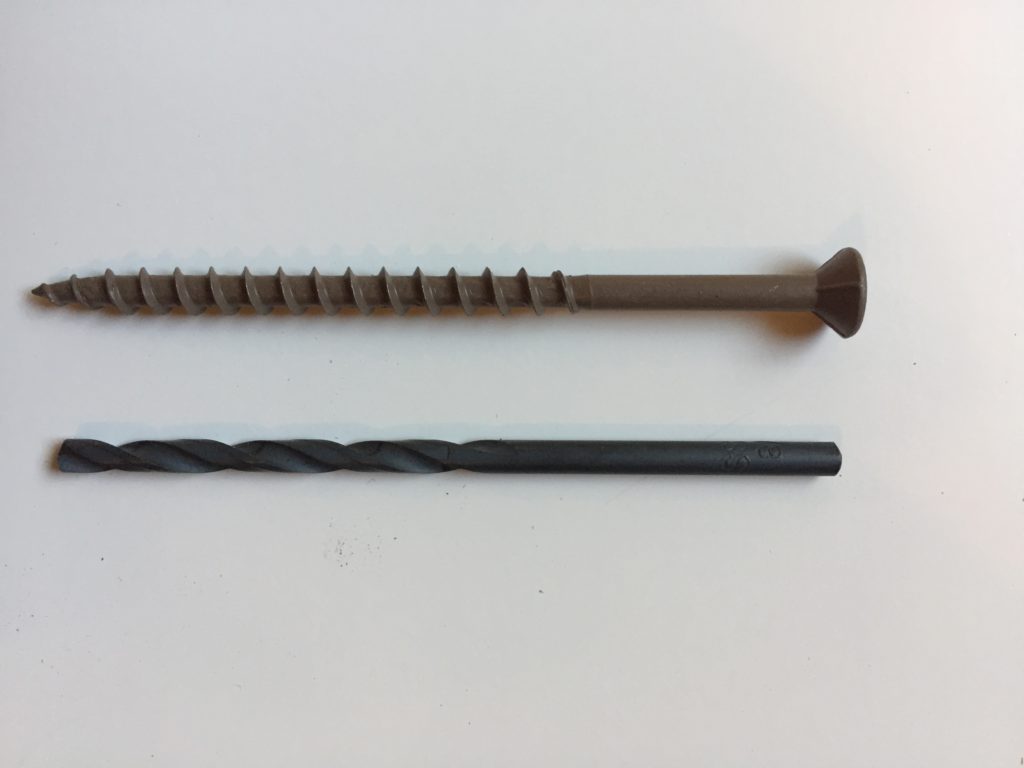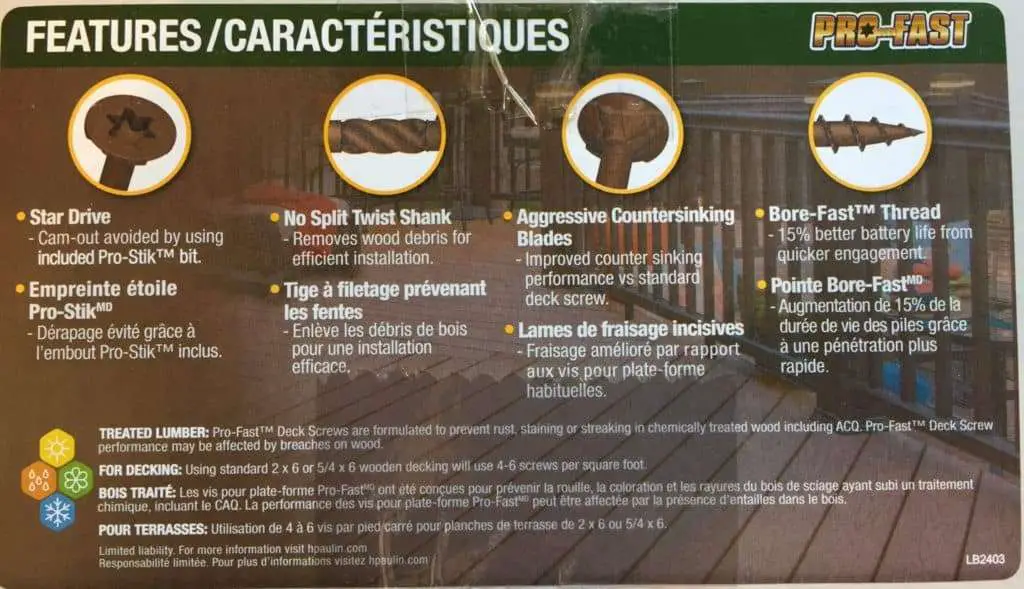Your deck is splitting. That is so frustrating! You spent all that money and did all that work, only for your decking to split and look like garbage. The appearance of your deck dropping like a rock. Crack lines multiplying over the decking. Splitting the ends of the boards and checking the length of the board.
Decking splits as it dries. As the water evaporates from the wood in the sun, the surface wood shrinks cracking around the un-shrunk core wood or fasteners. The solution to prevent decking from splitting is controlling the pace the wood dries and providing room around the fasteners for the decking to shrink.
The wood drying causes decking cracking and splitting. When a tree is first cut down, it is roughly half water. That is a lot of potential for shrinking and shrinking it will. In North America, lumber is dried to 19% humidity before leaving the mill but will continue to dry till matching the dry air of your backyard of 8-10% in dryer climates. This evaporation and wood shrinking needs to be accommodated.
They are two different types of deck splitting: structural end decking splitting and cosmetic field cracking of the decking. Cosmetic decking or in the industry called “checks” are unsightly but will not impact the structural strength of your decking. It may look ugly, but your deck can still be enjoyed for years to come. End splitting is a concern as these splits can crack through the full depth of the decking. Weakening the decking, where a foot could break through the decking.
Minimizing decking field cracking of decking
Unsightly but not a safety concern. Field splitting of the decking is a result of uneven drying. The air over the deck is dryer than the core of the decking, still saturated with water. The surface of the decking is torn, literally between being moist like the centre of the decking and dry like its new friend, dry summer air. As the surface wood dries, it shrinks, but the protected inner wood remains moist. To minimize checking, decking boards splitting, you need to slow down the drying process.
You can stop nothing of nature. Only slow it. The decking must achieve balance. There are three ways to help achieve this balance.
Dry boards before installing
First, if your decking comes from the lumber yard wet, give it time to dry under a tarp. It must be protected from the sun’s direct heat. Direct sunlight will heat up and dry the surface faster than the core, crack the decking. But climatizing the decking before installing will minimize splitting.
Vent the underside of the decking
Secondly, make sure the deck has ventilation under the decking. Moist air trapped under the deck will increase the conflict and splitting of the decking. The top of the decking rapidly drying and shrinking, but the underside remaining wet with the trapped moisture from the ground below. Deck ventilation is essential to have the decking dry consistently and not crack.
Ventilation should be achieved in two ways. Vents under the deck create air movement under the decking, pulling air in from one side of the deck and pushing it out the other side. Drawing out moisture under the deck, helping the decking have consistent moisture levels
Gapping between deck boards is not only for rain to run off the decking but also to allow air to circulate around the decking. Consistently drying the decking, minimizing cracking.
I go into a lot more detail of both how and why in another article. If you want to read more about deck ventilation, click here .
.
Seal the decking
Wood decking also needs to be sealed . Unsealed decking will absorb water increasing the moisture level of the decking. Then when the sun comes out, the surface of the decking will rapidly dry and crack with a wet core. Sealed decking can maintain equilibrium of moisture, both the heart and shell of the decking having the same moisture level.
. Unsealed decking will absorb water increasing the moisture level of the decking. Then when the sun comes out, the surface of the decking will rapidly dry and crack with a wet core. Sealed decking can maintain equilibrium of moisture, both the heart and shell of the decking having the same moisture level.
A word of caution, before sealing the decking, it needs to be dried, which is dangerous as this is the very action that splits the wood. The key is to protect the decking from extremes while drying. If you can’t dry out the decking under tarps before installing, shading the deck from the extreme summer sun will help to slow the drying process. It’s not the drying that damages but the speed. Just like cooking, better slow-roasted than burned. Covering the decking, giving it time for the centre to dry out at the same pace as the surface.
Once the decking is sufficiently dried, you are ready to stain or clear seal the decking to protect it. It is important that the decking is sealed or stained but not painted. Painting decking is not good for the wood. As paint forms a film over the decking, trapping high levels of water in the boards increasing rot. The paint will also crack and peel off once the decking does dry, unlike stain. Paint sits on top of the decking , so when the board shrinks, the paint peels off as it does not contract with the wood.
, so when the board shrinks, the paint peels off as it does not contract with the wood.
Minimizing End Cracking of decking
There are three ways to minimize the end of the decking from splitting. Addressing these will stop the decking from splitting as it dries.
End seal the decking before installing
The cut end of decking bleeds out moisture faster than the rest of the decking. Wood is composed of millions of straws of cells holding water. When you cut the decking, the moisture rapidly leaks out the ends, causing the end of the decking to dry out faster. The decking rapidly drying, cracks. Sealing the ends slows drying and cracking of the boards.
Move the location of fasteners to minimize decking splitting
The closer the fasteners are to the boards’ end, the more it will split the decking. By overhanging the decking a 1 ½” (38mm) gives the decking more material around the fasteners to hold the decking together.
The fastener at the end of the board is acting like an axe, slowly wedging the board apart as it dries. The wood shrinking while the screw is pushing against the wood, splitting it apart. Overhanging the decking past the end joist minimizes splitting.
You can learn more about decking overhang by clicking here . A highly recommended practise both to prevent splitting and deck ascetics.
. A highly recommended practise both to prevent splitting and deck ascetics.
Room to shrink but not split the decking
Along with keeping the fasteners back from the edge of the board, making room around the screw shank in the decking will minimize splitting. Creating room around the screw allows the wood to shrink without splitting.
There are two ways to screw ends of decking to prevent splitting, pre-drill or self-cutting screws.
to prevent splitting, pre-drill or self-cutting screws.
Pre-drill end decking before screwing
This is the traditional method of preventing decking end splitting. Pre-drill a pilot hole before screwing the decking down. The drill bit should be the size of the shank of the screw. Allowing the treads to cut through the wood put without splitting apart the wood. For #8 decking screws, 1/8″ (3mm) drill bit is perfect. If you are using larger diameter screws, adjust to match the shank of the screw.

Use better decking screws
Once upon a time, decking was nailed down, with its problems. In time screws replaced nails, but now there are screws better designed for decking. Deck screws that have self countering nibs, knurled shoulders and #17-point auger tips will cut through the decking better without splitting the decking.

Combining the drill bit cutting action with the screw. With the screw cutting and augering out the wood while attaching the board. Not as effective as pre-drilling but a real-time saver.
Decking that will not split
If all this talk about preventing decking from splitting is tiring you, I have another alternative. Composite decking will not split. Made from non-splitting material with hidden fasteners to boot. It is not wood decking, but it doesn’t split. If you want to learn more about composite decking pros and cons as a possible option, click here to read more.

